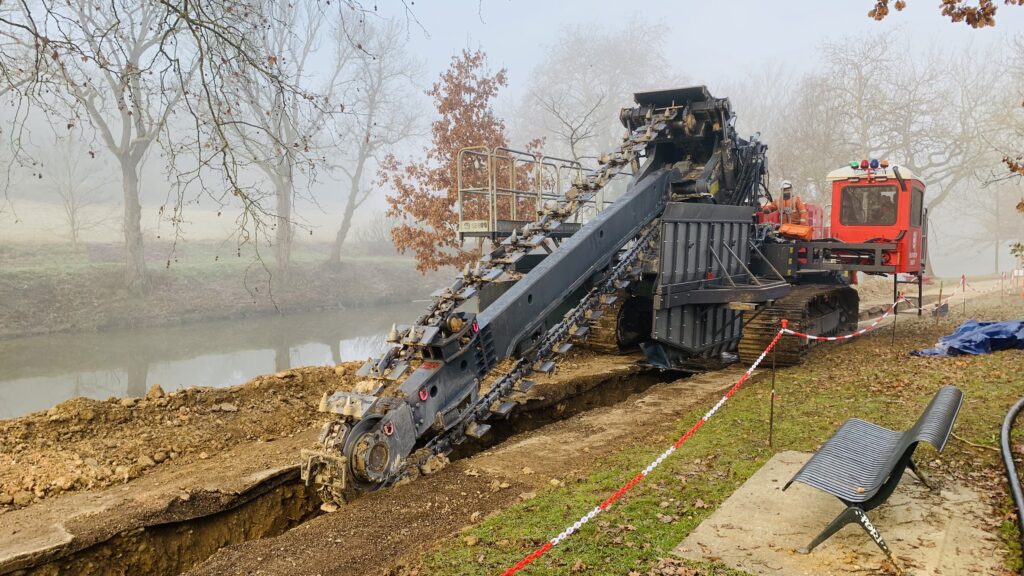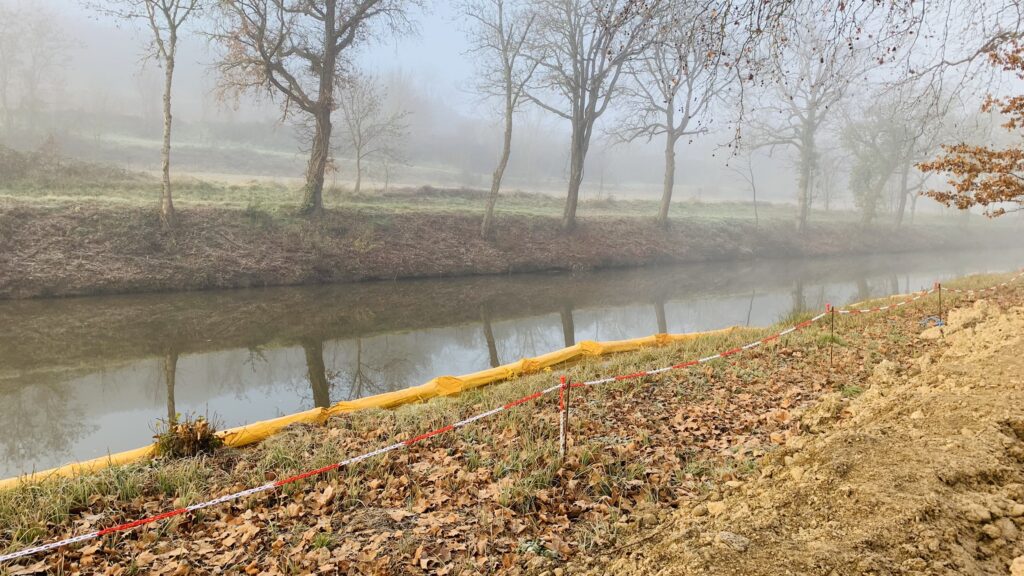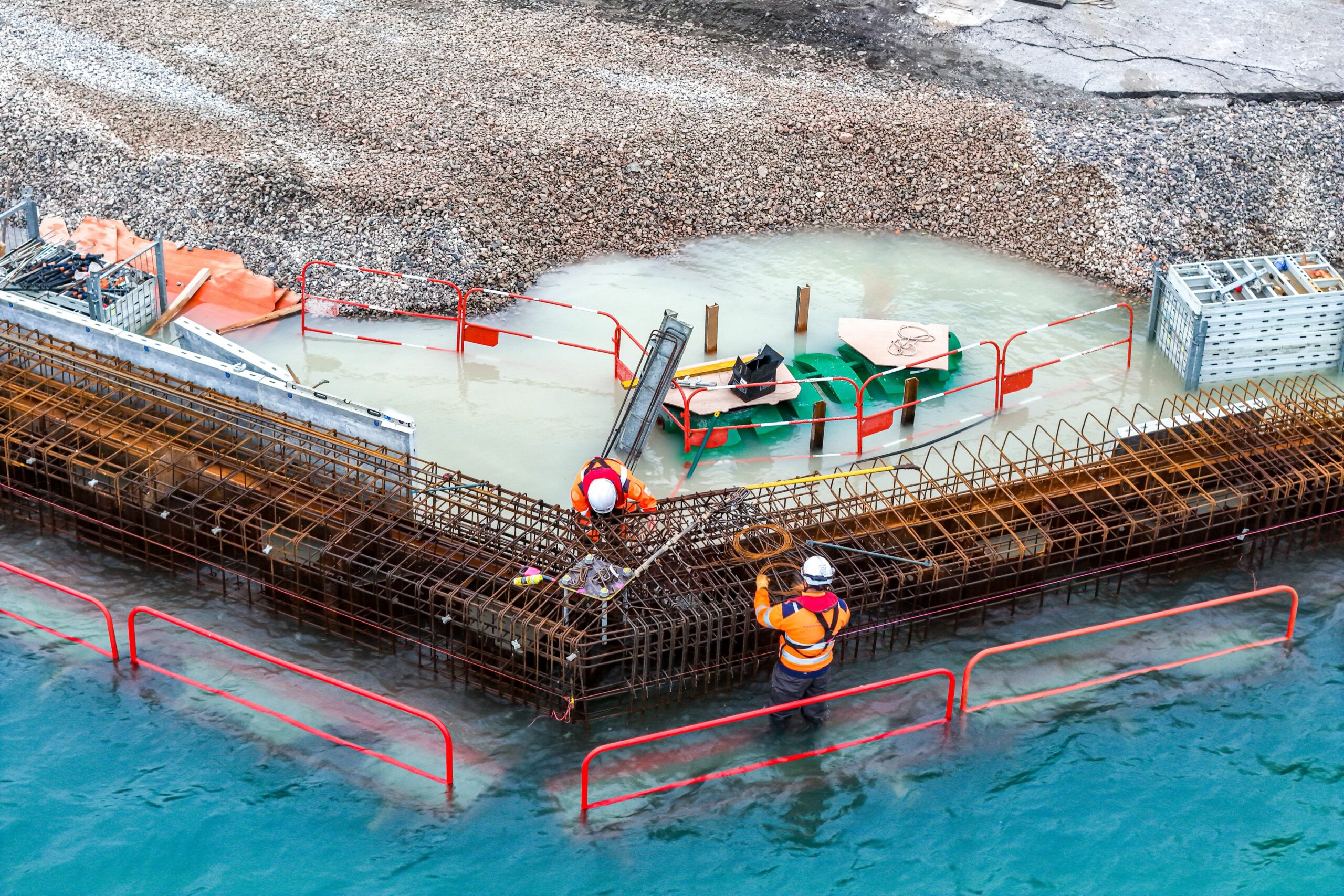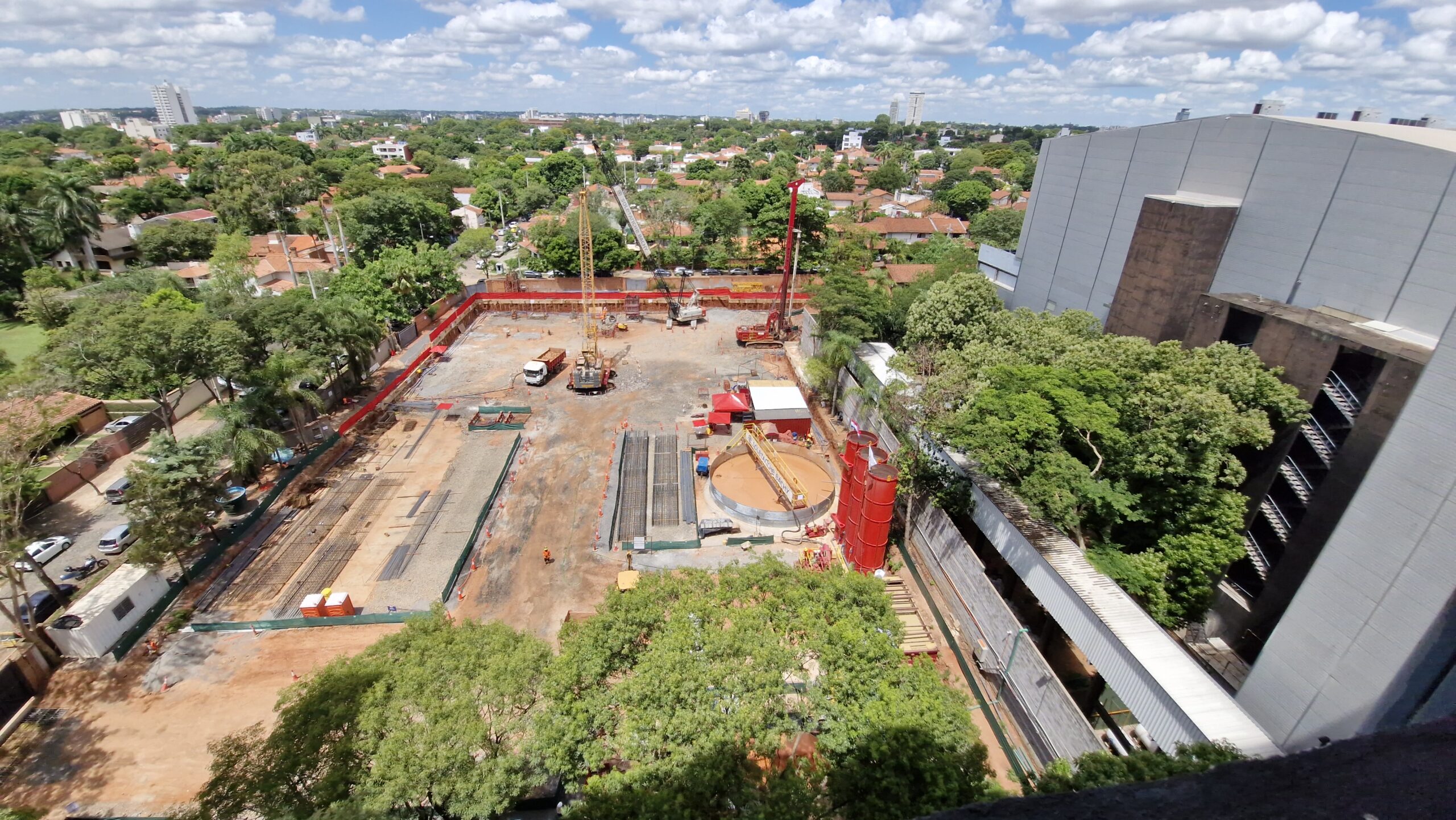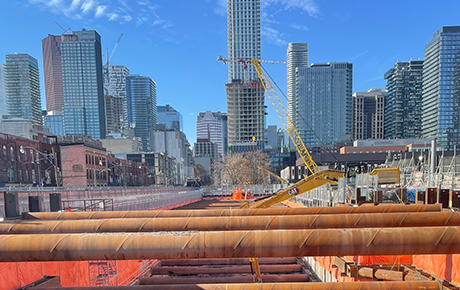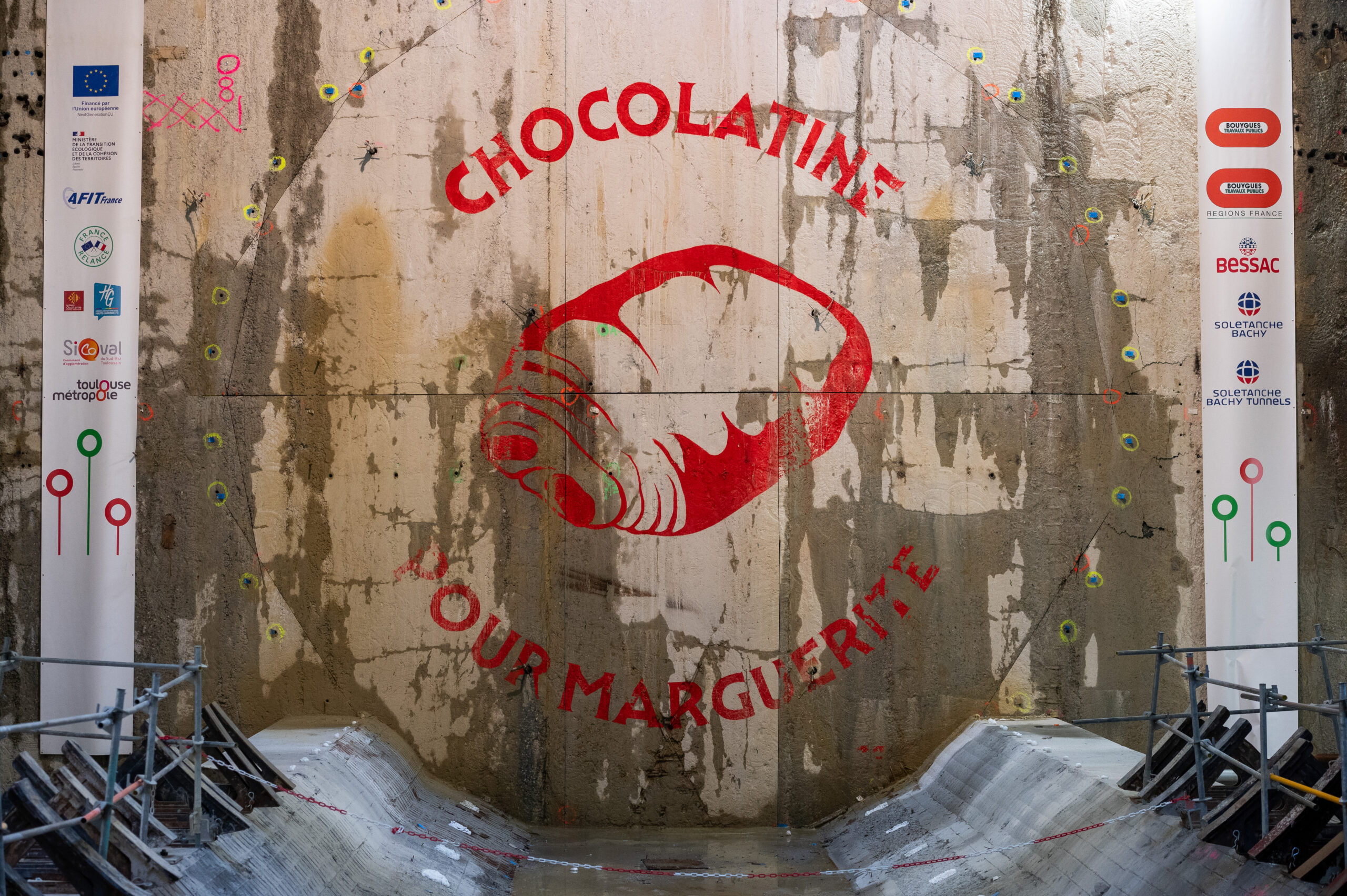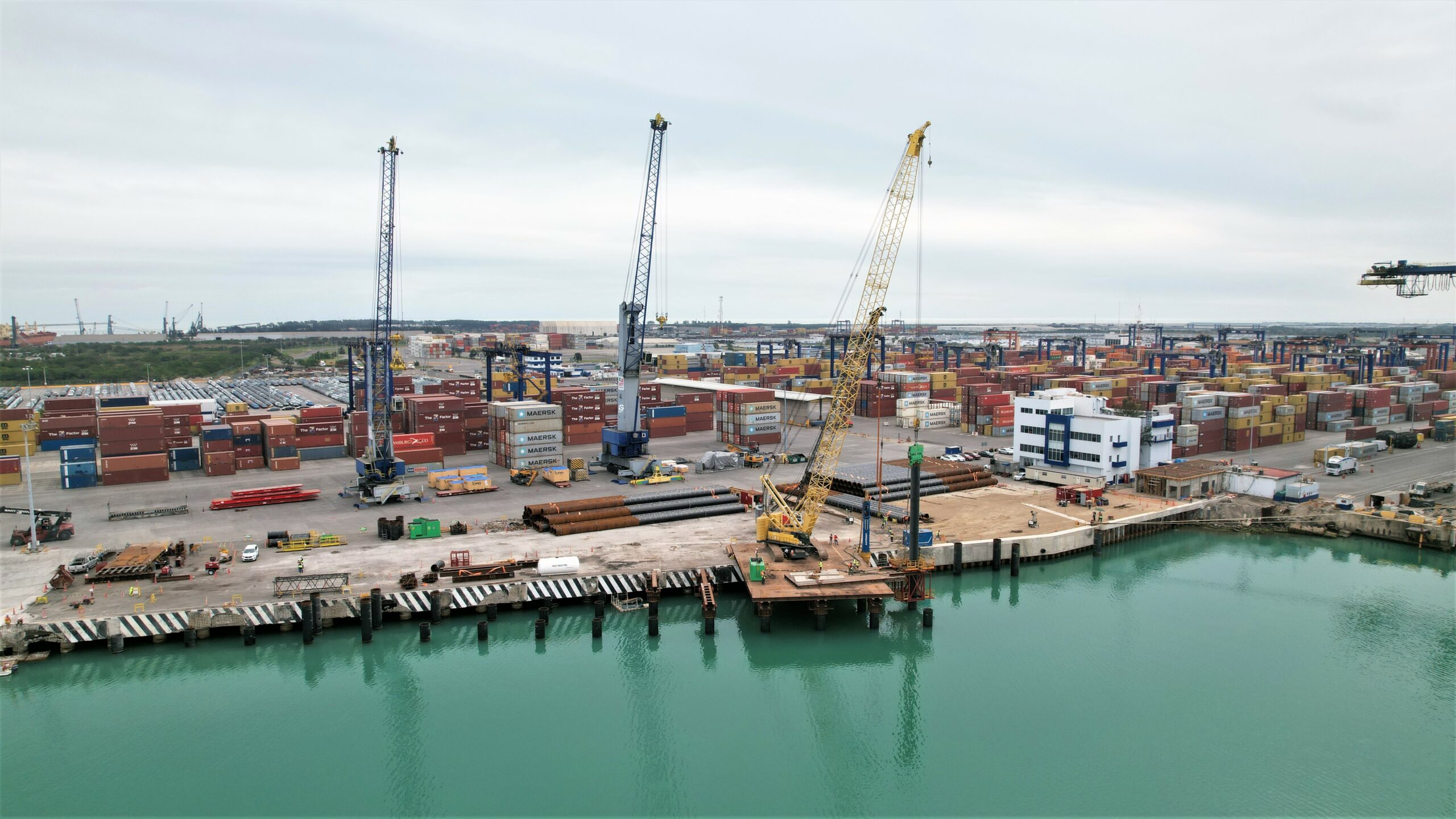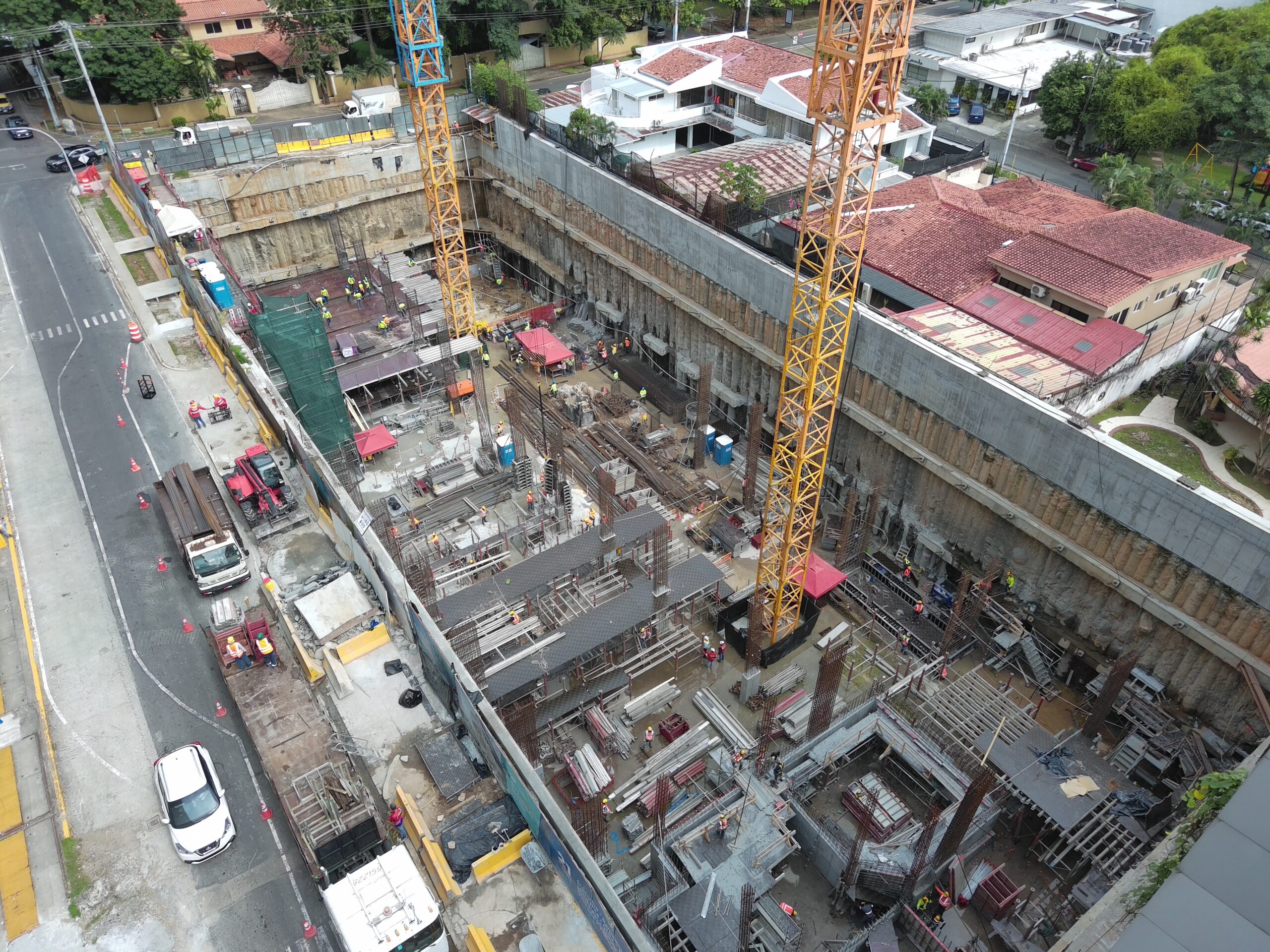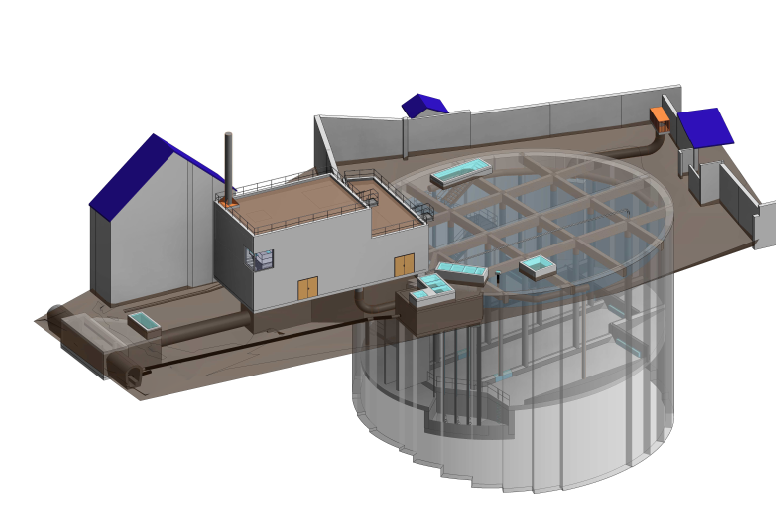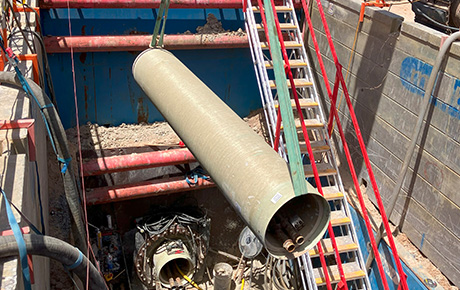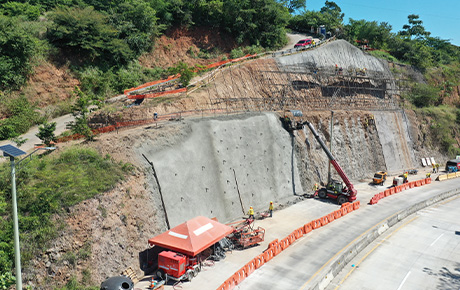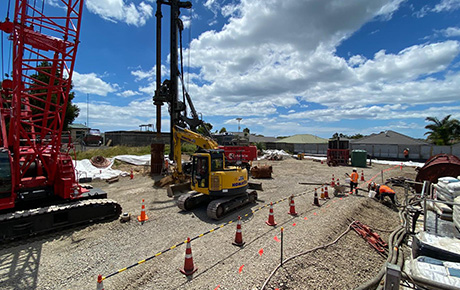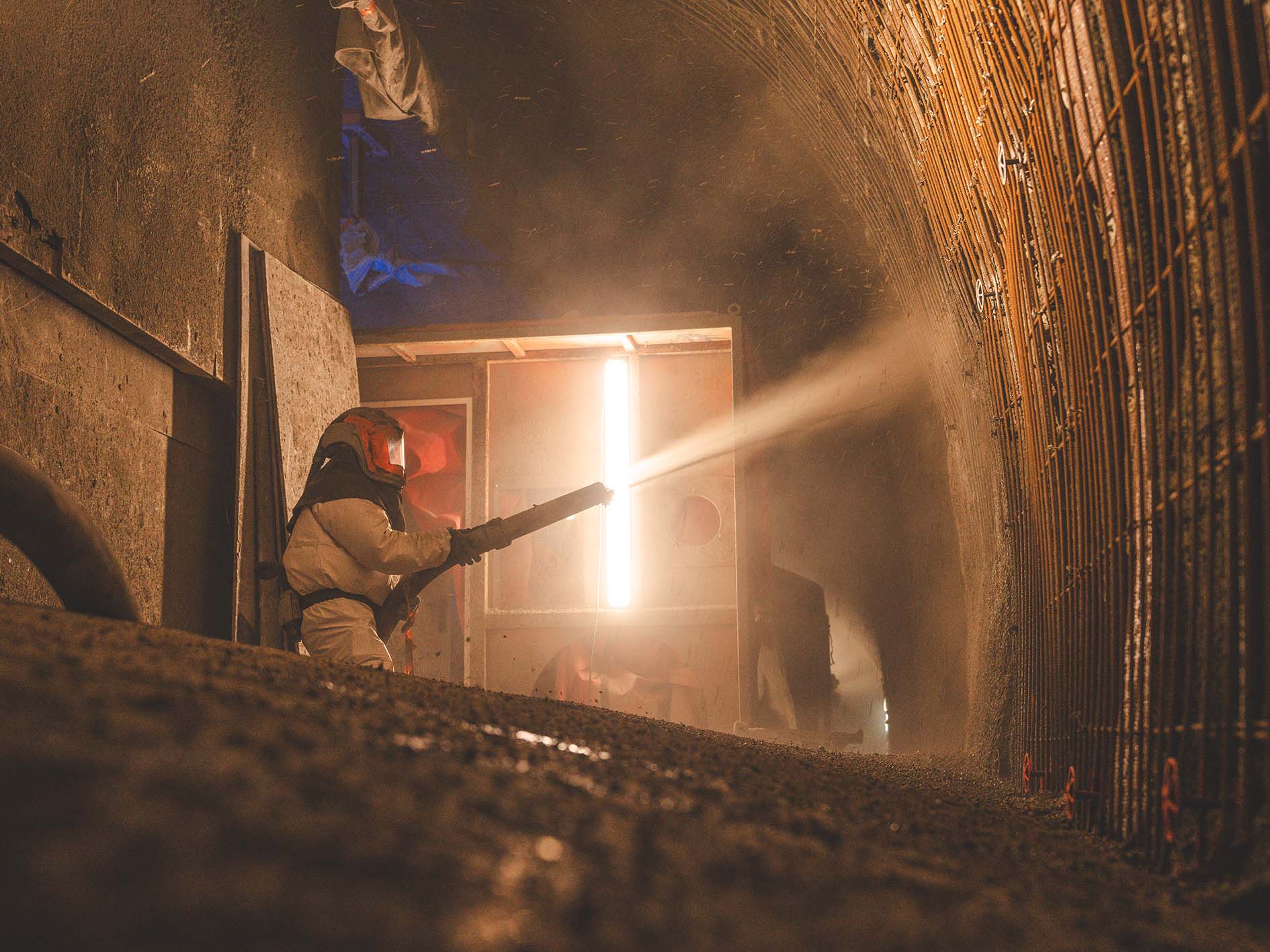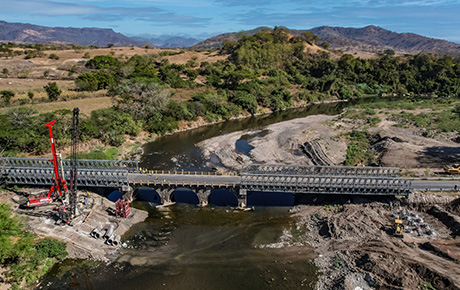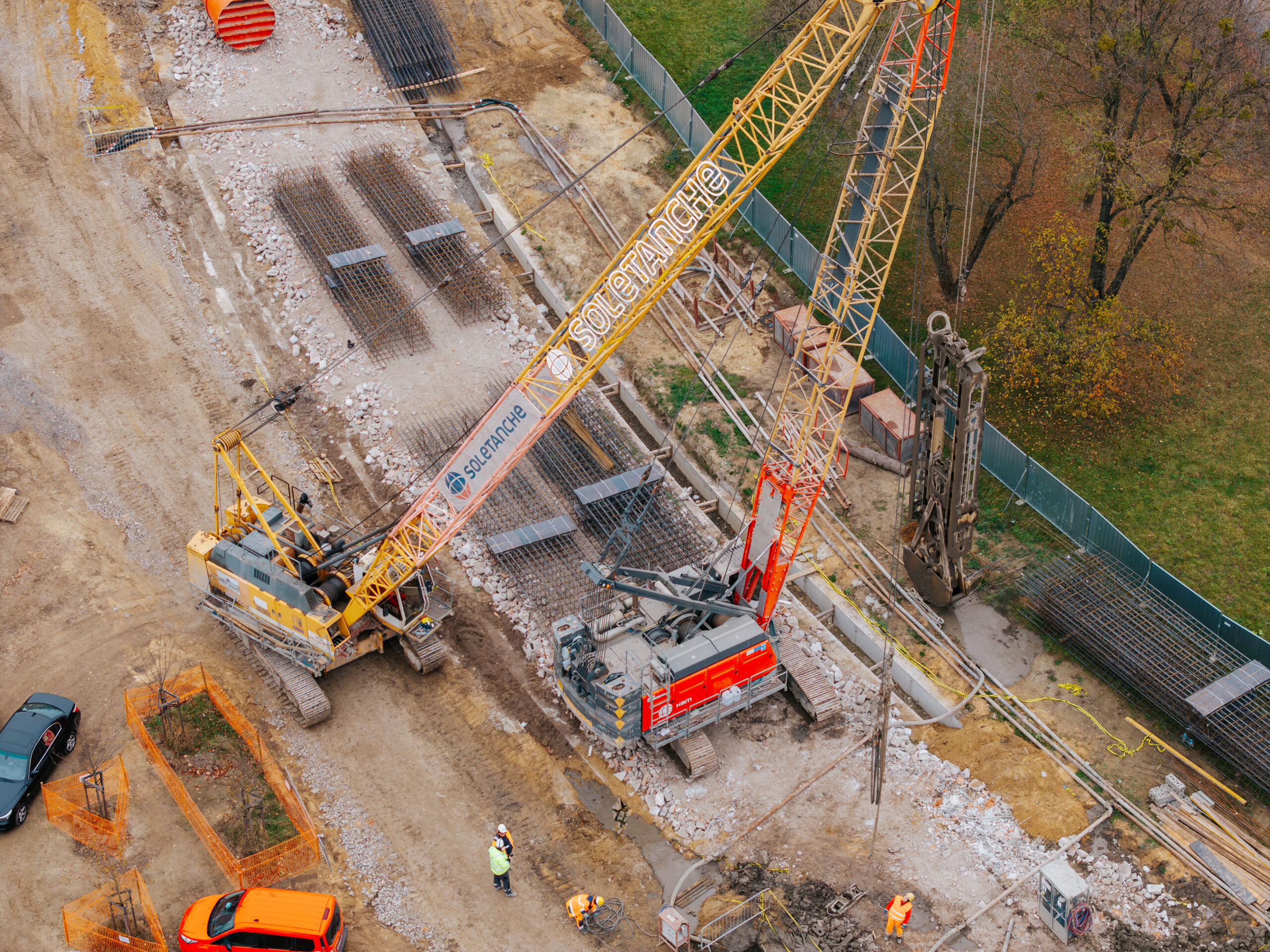January 28th, 2022
Repair of the waterproofing on the banks of the Emborel on the Canal du Midi (Haute-Garonne)
Soletanche Bachy France realise the preparatory work to detect and protect networks, build a cut-off-wall and repair the tow path bordered by plane trees.
A brief history
Construction of the “Royal Canal of Languedoc” between Toulouse and the Mediterranean was completed between 1666 and 1681, having been ordered in October 1666 by Louis XIV in a royal edict and overseen by Pierre-Paul Riquet.
Although authorised by the king, Riquet refused to use forced peasant labour under the “Corvée” regime, or more specifically the “Corvée Royale” regime, as was common at the time for the construction of roads. For 15 years, Riquet employed men and women who he organised into sections to form workshops headed by a Comptroller General. At its height, the site employed 12,000 workers. This optimal and streamlined project organisation allowed several worksites to operate simultaneously. All work was manual and the canal was dug using shovels and pickaxes.
It was not until 1789 that the revolutionaries renamed this exceptional engineering feat – considered the largest construction site of the 17th century – the “Canal du Midi”.
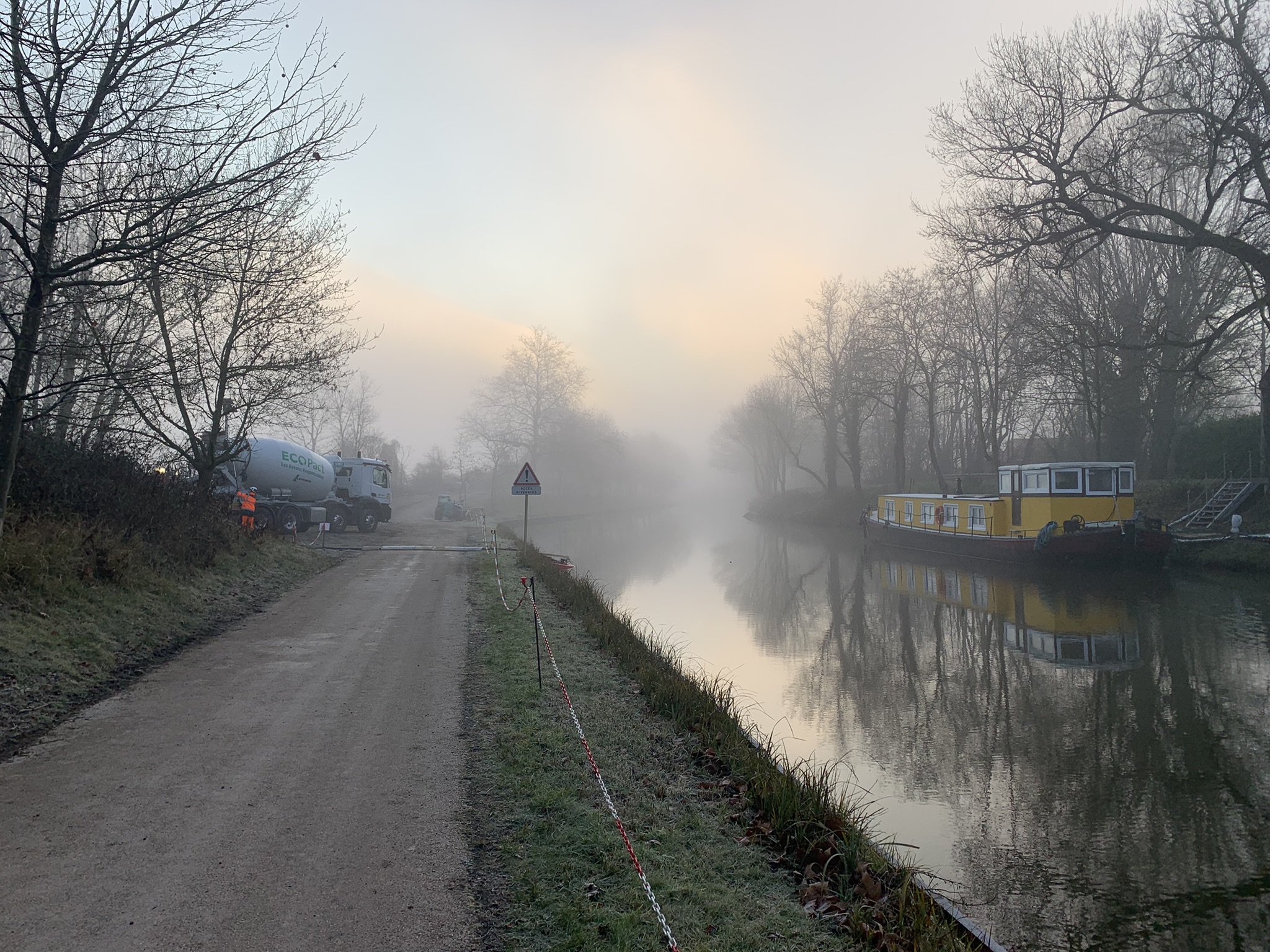
The operation
Following the appearance of localised leaks in the Emborel bank in recent years, Voies Navigables de France (VNF – French inland waterway authority) initiated the definition of a programme to tackle these problems due to the erosion of materials backfilled and compacted manually more than 300 years ago.
The section of bank affected by the works programme is 170m long and located a few hundred meters from the Emborel lock, in the town of Avignonet-Lauragais.
Geologically, the bank is composed of clay-loam embankments created by the disintegration of rock when the canal was dug. These embankments cover a hard marly-limestone substratum, considered to be impermeable.
Following a call for tenders, Soletanche Bachy France Sud, was awarded the entire contract by VNF and its engineer Egis, including preparatory work to detect and protect networks, build a cut-off-wall and repair the tow path bordered by plane trees, now a popular route for cyclists and walkers.
This posed a technical, logistical and environmental challenge for the SBF teams. But their firm grasp of the project and its issues has led to the definition of numerous actions which will be implemented to meet the project’s requirements:
- Preservation of the Canal du Midi landscape, listed by UNESCO as a World Heritage Site: the Trenchmix® process in wet method, was chosen as the most suitable to tackle the challenges raised by the site (restricted space, environment and limited height). Given the short length of the worksite, a decision was made to reduce the amount of on-site equipment, without modifying the execution process, by supplying the worksite with ready-to-use grout. Finally, the Trenchmix® process will also reduce the amount of spoil during the execution phase (mixing of the soil in-situ, the Trenchmix® process generates less than 10% of the volume treated in spoil).
This preservation of the environment also involves the use of a low-carbon cement of the CEM III/B type, and a Soil Mixing process allowing the reuse of the material in-situ. - Reduction of disturbance: the process and its methodology will be adapted to minimise disturbance to the environment (noise, dust and traffic) and the duration of the work, to enable this tourist area to be returned to users. To achieve this, a machine adapted to the narrow configuration of the site was chosen.
- Preservation of water quality and wetlands: a dam to filter suspended matter will be used preventively during the works, to isolate any potential dispersal of material into the canal water. Visual monitoring will also be carried out to detect any grout leaks during execution.
- Combatting the spread of canker stain (an incurable vascular disease affecting plane trees): preventive measures will be put in place (disinfection of machinery) to prevent the spread of canker stain.
After the construction of the Trenchmix® cut-off-wall, control tests will be conducted to validate the effectiveness of the treatment of leaks in the bank, followed by repair of the towpath in February.
